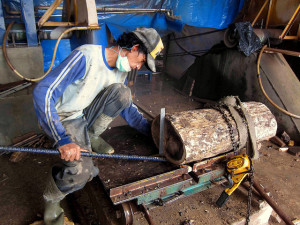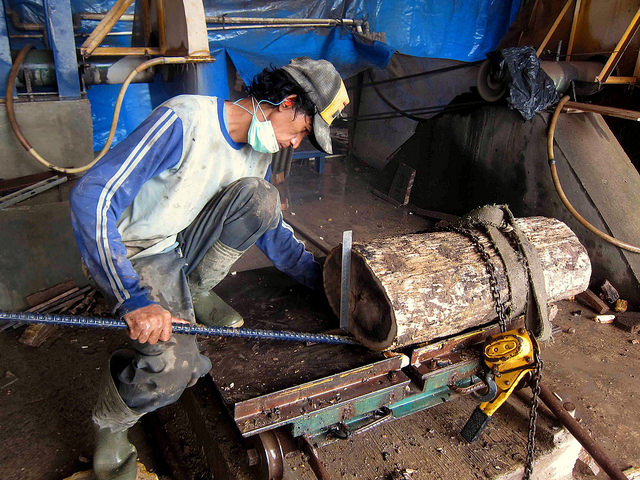 For the second time, the central bank has cut its 2016 forecast for the growth of the economy in Indonesia, Southeast Asia’s largest economy, as it anticipates uncertainty to still cloud next year’s development.
For the second time, the central bank has cut its 2016 forecast for the growth of the economy in Indonesia, Southeast Asia’s largest economy, as it anticipates uncertainty to still cloud next year’s development.
Due to persistent low commodity prices and weak export figures, Bank Indonesia (BI) now estimates that Indonesia’s economy will grow in the range of 5.2% to 5.6% in 2016 year-over-year, down from its earlier outlook of 5.3% to 5.7% and the initial outlook of 5.4% to 5.8%, according to a report by Indonesia-Investments.
BI Governor Agus Martowardojo revealed the downward revision early last week. “We think global trade will not have fully improved next year and commodity prices will not have bounced back,” Agus said, as quoted by The Jakarta Post.
Agus specifically mentioned the country’s top eight export commodities—copper, coal, palm oil, rubber, nickel, tin, aluminum, and coffee, whose prices had continued to fall for the past few years and had thus impacted exports.
“In 2015, the prices of these eight commodities have declined by an average 20 percent, while other commodities have fallen by around 16 percent,” he said.
Regarding full-year growth in 2015, Bank Indonesia expects a growth pace in the range of 4.7% to 5.1% year-over-year, down from an earlier projection of 5% to 5.4%.
Agus added that Bank Indonesia expects economic growth to accelerate in this year’s third and fourth quarters on improved government spending and infrastructure development. In the first half of 2015 government spending and government-led infrastructure development had been weak.
In the second quarter of 2015, Indonesia’s GDP growth slowed to the six-year low of 4.67% year-over-year amid external turmoil (low commodity prices, China’s economic slowdown, and looming monetary tightening in the U.S.) and internal factors (high inflation, declining purchasing power, and the central bank’s high interest rate).
But Agus said the central bank’s new GDP growth projection is still in line with the government’s own forecast of 5.5% stated in the 2016 state budget draft.
“It is also higher than our range of 4.7 to 5.1 percent for 2015 because the government’s investment, especially infrastructure investment, will help support domestic demand,” he added.
Business group sees 5% growth this year
As this developed, the Indonesian Chamber of Commerce and Industry (Kadin) has forecast an economic growth rate of around 5% for Indonesia this year.
“It will be great if we achieve five percent growth because the national economy is still disturbed. As of now, the country’s economic growth is still between 4.7 and 4.8 percent,” Kadin chairman Suryo Sulisto said recently.
Sulisto said the economic slowdown has been caused by the global crisis that discouraged demand and lowered commodity prices and people’s purchasing power, according to a report by national news agency Antara News.
The depreciation of the rupiah against the U.S. dollar is also an important factor that has affected the national economic development.
To boost economic growth, the government needs to take many steps and put in place policies that support the economy, such as accelerating and increasing state expenditure.
“With these steps, the economic growth target, which has been revised down to 5.2 percent, is expected to be achieved,” Sulisto said.
Exports slide in August
In related developments, Indonesia recorded a trade surplus of US$433.8 million in August, with exports reaching $12.78 billion and imports at $12.27 billion.
The volume of trade also recorded a surplus of 28.94 million tons, contributed by a surplus in the non-oil/gas sector at 29.26 million tons and a deficit of 320 thousand tons in the oil/gas sector, National Statistics Agency Chief Suryamin stated recently.
The non-oil/gas sector recorded a surplus of $1.01 billion, but the oil/gas sector recorded a deficit of $500 million.
Suryamin noted that the country’s exports in August reached $12.70 billion, up 10.79 percent from July’s exports but dropped by 12.28% compared to the same period last year.
Imports for August, meantime, reached $12.27 billion, an increase of 21.69 percent from July’s imports but decreased by 17.06 percent compared to the same period last year.
“Cumulatively, the trade from January to August 2015 recorded a surplus of US$6.22 billion,” he said.
He added that the exports from January to August 2015 reached $102.52 billion, while imports were recorded at $96.30 billion.
Photo: IndoGemstone





